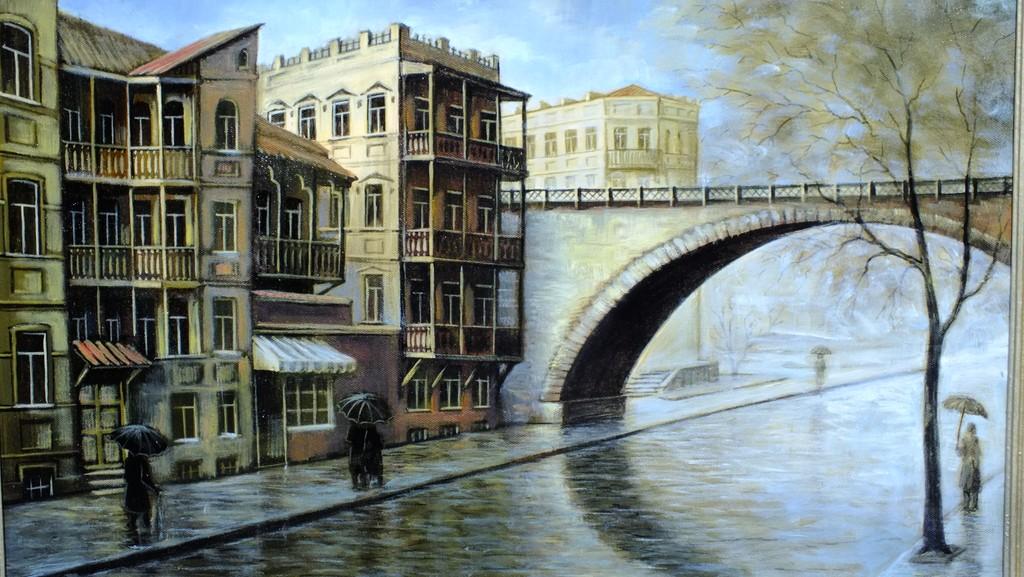The street in Tbilisi named after Italian architect Giovanni Scudieri who worked in Odessa
Giovanni Scudieri was born in 1817 in the city of Padua in Northern Italy. After graduating from the Higher Imperial-Royal School in 1837, he left for Russia.
Soon, Scudieri was appointed freelance architect in the Odessa Construction Committee. Being an associate of the Governor General Mikhail Vorontsov, he became the author of many development projects in the central part of Odessa. After being appointed governor in the Caucasus, in 1846 Vorontsov takes the architect to Georgia and appoints him to the post of Tiflis* city architect. With Vorontsov, the compilation of plans and drawings of all significant structures in Tiflis was entrusted exclusively to Scudieri.
* Until 1936, the name of the city in English and most other languages was Tiflis, while the Georgian name was Tbilisi.

In Tbilisi, he worked on projects like the Dry Bridge, Freedom Square, and the Military Cathedral which was built on Rustaveli Avenue, and later destroyed. Well, the Dry Bridge was called “Mikheil’s minor bridge†some time ago. In 1851, the first Transcaucasian theater of opera and ballet opened in Tbilisi, which was also designed by the Italian architect.
According to a statement from Tbilisi City Council, the street adjacent to the Dedaena Park in Tbilisi was named after the famous Italian architect Giovanni Scudieri, who made a significant contribution to the development of the Georgian capital. An initiative to name one of the streets of Tbilisi with the name of Scudieri was made by the Ambassador of Italy to Georgia Antonio Enrico Bartolli. It was Bartolli and the Chairman of Tbilisi City Council, Giorgi Tkemaladze who opened the Scudieri street sign.
Giovanni Scudieri was an outstanding man of arts of the 19th century, whose architectural structures are invaluable for our country. In order to honour his work and name, we decided to name this beautiful street after him. I am glad that we have done so
Giorgi Tkemaladze

This is a great honor. Giovanni Scudieri Street opened in the place where part of his work is located. It is important that the younger generation know who Giovanni Scudieri was.
Antonio Enrico Bartolli, Italian Ambassador



The Georgian National Opera and Ballet Theater of Tbilisi also the project of Giovanni Scudieri in the Moorish style, formerly known as the Tiflis Imperial Theater, is an opera house situated on Rustaveli Avenue in Tbilisi, Georgia. Founded in 1851, Tbilisi Opera is the main opera house of Georgia and one of the oldest such establishments in Eastern Europe.

The construction was completed in 1851. The interior of the Theater was decorated by a Parisian designer, using colored velvet, gold and silver details, and expensive silks. A massive chandelier weighing 1,218 kilograms (2,685 lb), unassembled in 12 large boxes, was shipped by a steamer from Marseille to Kulevi on the Black Sea coast. Buffalo pulled the chandelier more than 300 kilometres (190 mi) to Tiflis. Russian painter Grigory Gagarin created the artwork for the theater and its first stage curtain. The second curtain was designed by Sergo Kobuladze in the 1950s. Vorontsov appointed writer Vladimir Sollogub as the theater's first director.
In the spring of 1851, the theater director invited an Italian opera troupe, which had been touring the Russian Empire under the conductorship of the Spanish composer Francisco Asenjo Barbieri, to perform in Tiflis.
On 11 October 1874, a fire began before a performance of Vincenzo Bellini's Norma. The Theater was completely destroyed, including the rich musical library, costumes, scenery, props and all of Gagarin's paintings. The city held a contest for a new architectural design. Viktor Schröter, an architect of German origin from Saint Petersburg, submitted the winning design. Construction of the new theater took years to get underway. The theater finally reopened in 1896.


The architect tragically died on June 5, 1851 during the construction of the Nikolaev Military Cathedral in the Alexander Garden, he fell from the scaffolding . Nevertheless, the temple was built according to his project, however, after the Sovietization of Georgia, the structure was destroyed.
Based on an article from Georgia Today





















